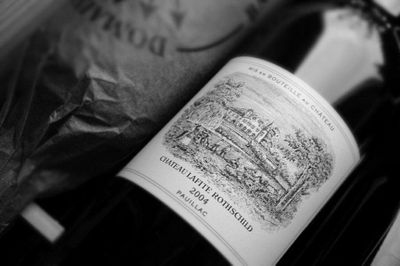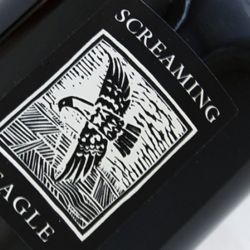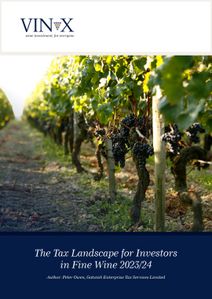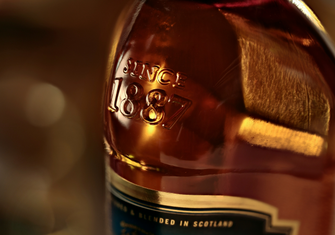Luxury, liquid investments fine wine and rare whisky, how do they compare as assets and what do you need to know?
On the 265th anniversary of the birth of the Scottish Bard, millions around the world will be raising a celebratory dram of whisky to the Haggis and Scotland’s Robert (‘Rabbie’) Burns. That’s after they’ve quaffed a rather nice claret to complement the traditional Burns Night repast. Wine and Whisky, not just for consumption, both are now considered alternative assets, but how should we look at them in 2024?
What do the secondary markets in wine and whisky look like?
Fine wine and Scottish whiskies have been made for centuries and as consumable beverages their production and traditional routes to market are ancient and highly established.
The fine wine secondary market
At the start of the 21st Century Liv-ex.com (London International Vintners Exchange) was established, creating a global ‘stock exchange’ for fine wine. Since then, the trade on Liv-ex has broadened from being 95% focused on prime Bordeaux, i.e the most highly sought after vintages of the five First Growths, to investment-grade wines from around the world.
 Today there are over 620 global fine wine merchant members from 47 countries utilising the exchange to buy, sell and price fine wine. With over £100million of fine wine available for merchant members to access and over 24 years of trading data and historical pricing information, Liv-ex provides price transparency, accessibility, data and efficiency to the market which ultimately delivers investor confidence and market growth.
Today there are over 620 global fine wine merchant members from 47 countries utilising the exchange to buy, sell and price fine wine. With over £100million of fine wine available for merchant members to access and over 24 years of trading data and historical pricing information, Liv-ex provides price transparency, accessibility, data and efficiency to the market which ultimately delivers investor confidence and market growth.
Other platforms have been developed providing price and quality information and the ability to buy and sell wine online continues to grow. With increased access there has been a growing number of specialists in the market providing expert services and access to investment wines. Fine wine investment is becoming more and more mainstream and recognised as a tangible option for diversifying an investment portfolio.
The rare whisky market
Firstly, we should recognise that Ireland, Japan and the USA are additional territories producing sought after whisky or 'Scotch'. Rare whiskies are extremely scarce, mostly sold either via private sale or auction and as a consequence this is still an 'illiquid' market. In fine wine we see rarity at production levels of a few hundred cases (12 x 75cl) each year, with super-brand producers such as Burgundy’s Domaine de la Romanée Conti or Napa’s Screaming Eagle key examples.
 With whisky we may be talking about production as few as five bottles, for example The Glen Grant Devotion 70 year old – a single decanter of seven, distilled in 1953 and auctioned in September 2023 for US$101,300.
With whisky we may be talking about production as few as five bottles, for example The Glen Grant Devotion 70 year old – a single decanter of seven, distilled in 1953 and auctioned in September 2023 for US$101,300.
In November 2023 a bottle of The Macallan Adami 1926 sold for a record-breaking £1.2million, exceeding its pre-sale £750K estimate. Just 40 bottles of The Macallan 1926 were made.
Whisky delivers great press headlines off the back of a small number of outstanding individual bottle sales of high-profile brands such as The Macallan. This most iconic whisky brand has produced a number of landmark auction sales of over £1million per bottle.
With such tight supply the secondary market price information for valuing whisky assets remains obscure. However, this embryonic investment space is on the move and as with the development of the secondary market in fine wine, more information is becoming available. Whisky is now beginning to be traded on Liv-ex and new platforms are emerging, however there is nothing like the available data to analyse whisky as an investment as there is on fine wine.
How are profits from wine and whisky investments taxed?
 There is a difference and investors need to be aware of this when planning to invest in wine and whisky. Investors should always seek professional advice in this regard and the following provides some general insight only.
There is a difference and investors need to be aware of this when planning to invest in wine and whisky. Investors should always seek professional advice in this regard and the following provides some general insight only.
Does Capital Gains Tax apply to wine and whisky investments?
Fine wine and cask whisky are both classified by HMRC as a ‘wasting asset’, i.e the asset is not expected to have a predictable life of over 50 years. Any profits would be exempt from Capital Gains Tax.
Do VAT and Duty apply to wine and whisky investments?
If you remove wine from bonded storage VAT and Duty will become due, but investors generally store and sell investment wine whilst keeping their asset in bond, so these taxes are generally not triggered. The same applies to cask whisky.
Tax and bottled whisky
Bottled whisky does not have the same tax treatment. Firstly, once the whisky moves from cask to bottle, Duty and VAT become payable. It is then expected to maintain its quality beyond 50 years and therefore is not classed as a ‘wasting asset’ by HMRC. The CGT exemption no longer applies and Income Tax may also be triggered. Investors can possibly utilise the Chattels exemption HMRC for assets with a value of less than £6,000.
Our view on what to expect from investing in wine and whisky in 2024
Luxury investments such as fine wine, watches, art, classic cars and whisky generally found market conditions challenging in 2023. Whisky experienced much more modest growth in returns during the period of the fine wine bull run which peaked in September 2022. As a sector it therefore didn’t experience the same level of adjustment last year.
Higher value whisky investments of over £5,000 saw a greater downward pressure on price in 2023 so for those considering this end of the market there may be opportunities to find value. The challenge, however, is exactly that. Investors need to consider the market very carefully given the very little information publicly available on whisky price information and current valuations.
 Meanwhile, 2024 looks very interesting for wine investors. In Q4 2023 there were indicators of the market showing signs of a change in direction. Whilst the first quarter of this year is expected to remain relatively tentative, a flattening market is expected to produce some upside in the coming months and investors could buy at the market low in early 2024.
Meanwhile, 2024 looks very interesting for wine investors. In Q4 2023 there were indicators of the market showing signs of a change in direction. Whilst the first quarter of this year is expected to remain relatively tentative, a flattening market is expected to produce some upside in the coming months and investors could buy at the market low in early 2024.
There are significant opportunities for investors new to wine to start and build a wine portfolio that offers significant potential for future growth. For existing investors there are great investment wines at prices offering the opportunity to diversify a fine wine portfolio, add value and average down the overall investment cost.
For more information on Tax and Wine Investment, see our special Report. Get the latest fine wine performance information and details on current wine investment opportunities, by speaking to our expert team on 0203 384 2262.

